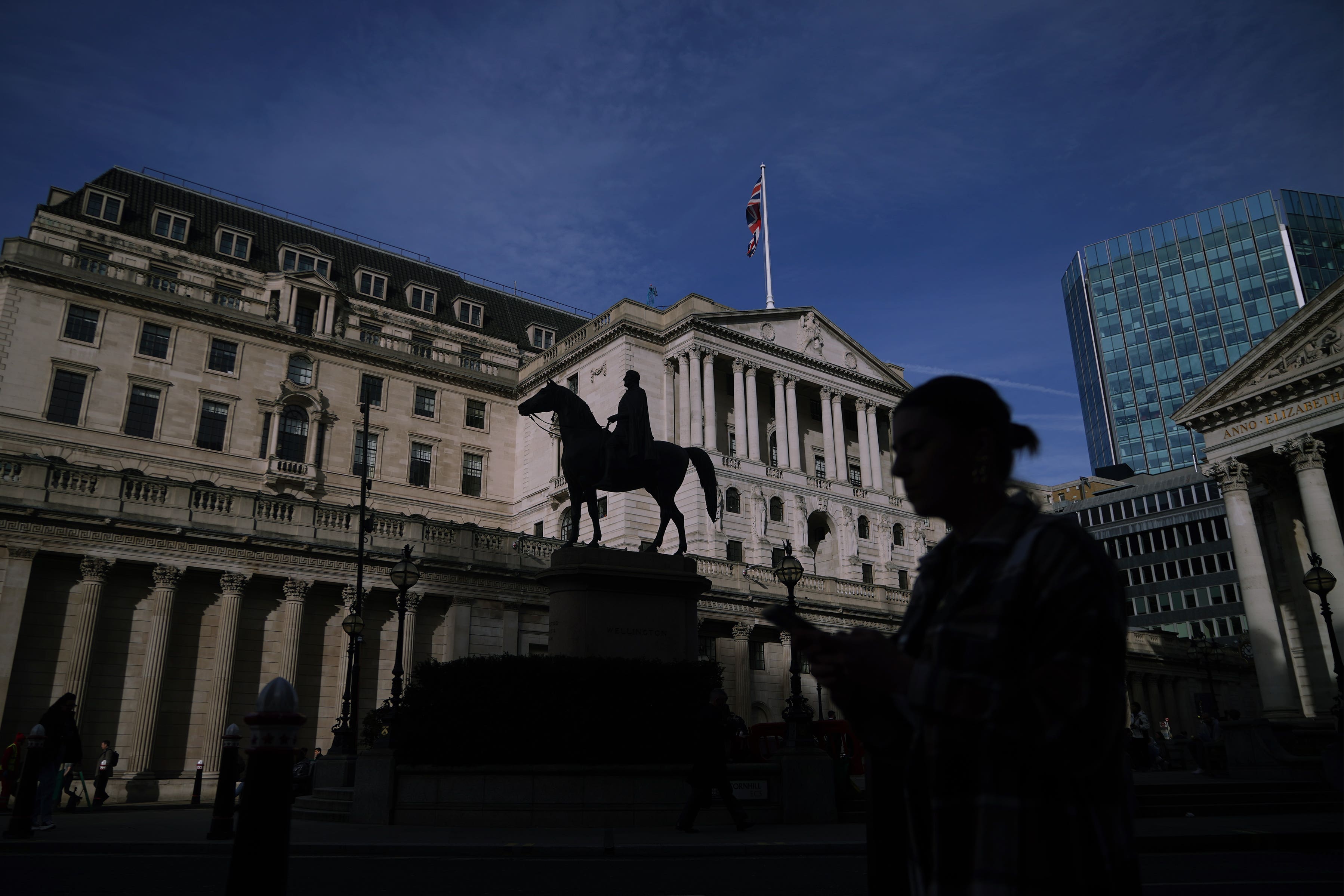Bank of England keeps interest rates on hold, but shows signs of cuts to come
Governor Andrew Bailey said things are ‘moving in the right direction’.

Your support helps us to tell the story
From reproductive rights to climate change to Big Tech, The Independent is on the ground when the story is developing. Whether it's investigating the financials of Elon Musk's pro-Trump PAC or producing our latest documentary, 'The A Word', which shines a light on the American women fighting for reproductive rights, we know how important it is to parse out the facts from the messaging.
At such a critical moment in US history, we need reporters on the ground. Your donation allows us to keep sending journalists to speak to both sides of the story.
The Independent is trusted by Americans across the entire political spectrum. And unlike many other quality news outlets, we choose not to lock Americans out of our reporting and analysis with paywalls. We believe quality journalism should be available to everyone, paid for by those who can afford it.
Your support makes all the difference.The Bank of England has voted to keep interest rates unchanged, but showed what was perhaps the clearest sign in years that cuts could come in the months ahead.
Bank governor Andrew Bailey said the economy is “not yet at the point” where rates can be lowered, but things are “moving in the right direction”.
For the first time since September 2021, no-one on the nine-person decision-making body that sets interest rates voted for an increase.
Eight members of the Monetary Policy Committee (MPC) said rates should be kept at the current 5.25% level at least until it meets next time.
While a vote to keep rates steady had been widely expected, in a surprise move two members who last month voted to keep hiking rates changed their minds.
“In recent weeks we’ve seen further encouraging signs that inflation is coming down. We’ve held rates again today at 5.25% because we need to be sure that inflation will fall back to our 2% target and stay there,” Mr Bailey said.
“We’re not yet at the point where we can cut interest rates, but things are moving in the right direction.”
Jonathan Haskell and Catherine Mann had in February’s meeting argued that rates should rise to 5.5%, but on Thursday they joined the majority to vote for 5.25%.
One member of the committee, Swati Dhingra, voted to cut rates to 5%, repeating her vote from last month.
Every time the MPC meets, economists analyse the exact words it uses to see what has changed since last time.
This time much of the language was unchanged, but the Bank did say rates are “bearing down on inflationary pressures”.
The Bank is tasked to keep inflation under control, and interest rates are its main tool to do so. When rates go up, it tends to put downwards pressure on inflation.
Inflation, measured by the Consumer Prices Index, has been very high in the last two years for a series of reasons including Russia’s invasion of Ukraine.
Data released on Wednesday by the Office for National Statistics showed inflation reached 3.4% in February, its lowest point since 2021.
The data also showed inflation in the services sector, in the Bank’s words, “remains elevated at 6.1%”.
And despite the slowdown in inflation, “key indicators of inflation persistence remained elevated”, the Bank said.
At the MPC’s meeting there had been some disagreement within the eight-person majority which voted to keep rates unchanged.
One group in the majority thought interest rates were “having a material impact in reducing the more persistent and slower-moving components of inflation”.
But on the other end there was a group who thought “wage growth remained too high” and there are just “limited signs” that services inflation would return to the 2% target “sufficiently rapidly”.
Among these, “members (were) differing on the extent of evidence that was likely to be needed” before they started cutting rates.
Ms Dhingra argued “consumer price inflation was already, and had been for some time, on a firm downward trajectory”.
Speaking to broadcasters later in the day, Mr Bailey said: “Inflation has come down. It’s come down as we expected.
“But we have still got some way to go, particularly with what I call the more persistent bits of inflation.
“That’s particularly the services element – it’s about half the total basket of prices – that’s still at 6%.
“Now, we don’t need to see it come all the way down to a sustainable level consistent with the target, but we do need to see further progress.
“But I do want to give this message very strongly, we’ve had very encouraging and good news so I think we can say we’re on the way.”